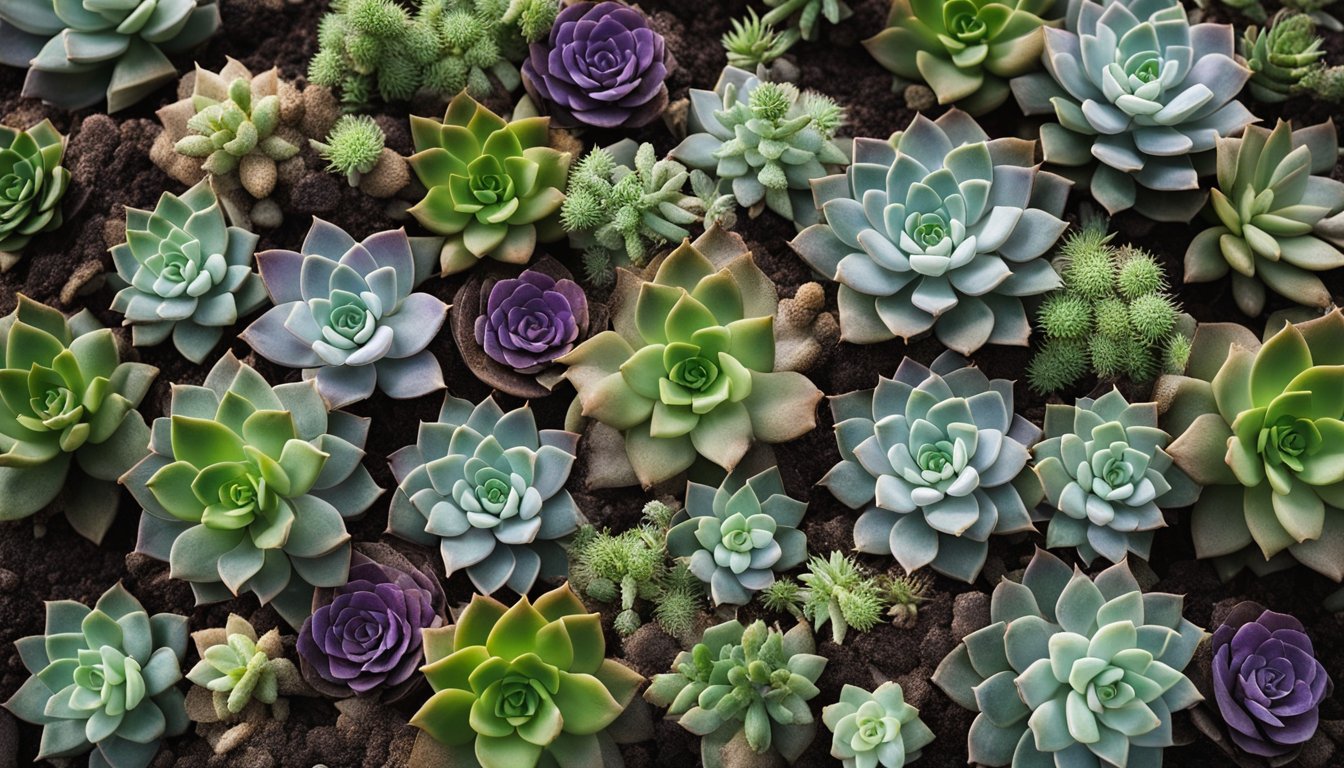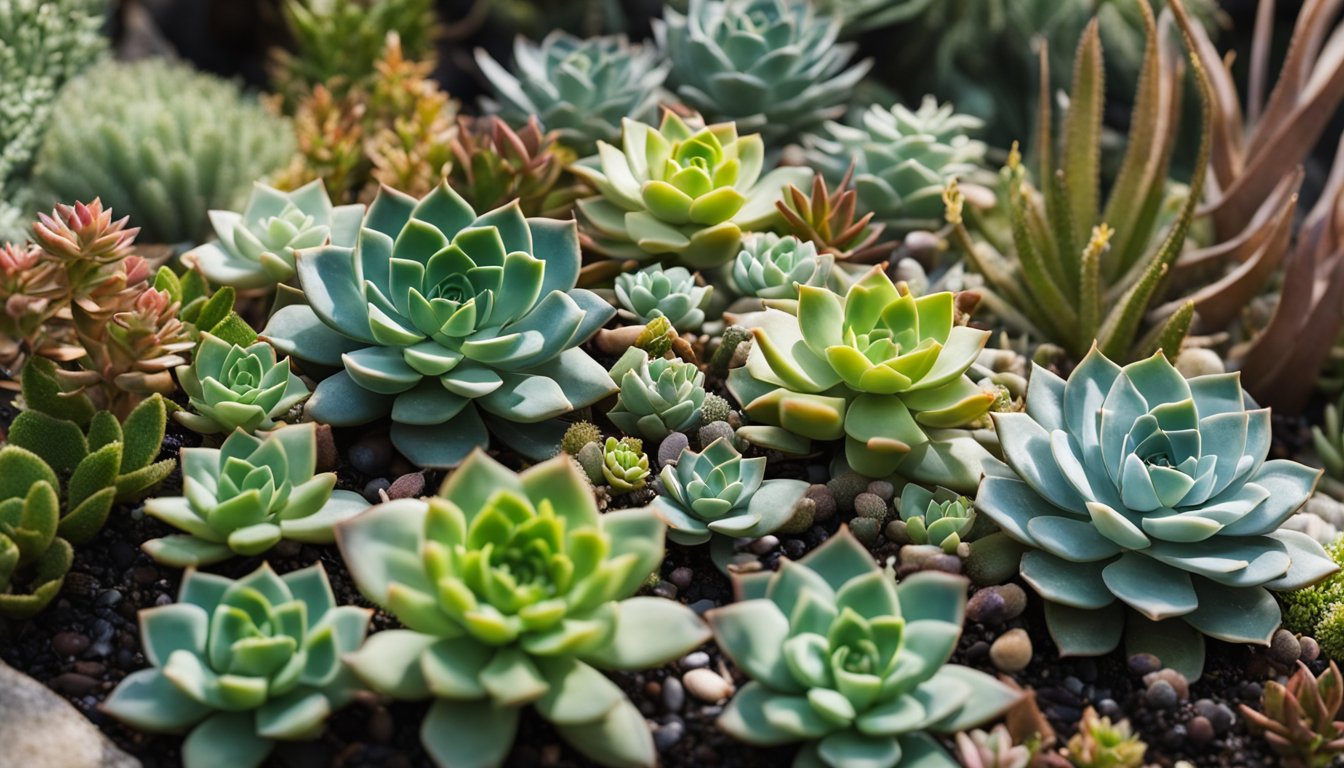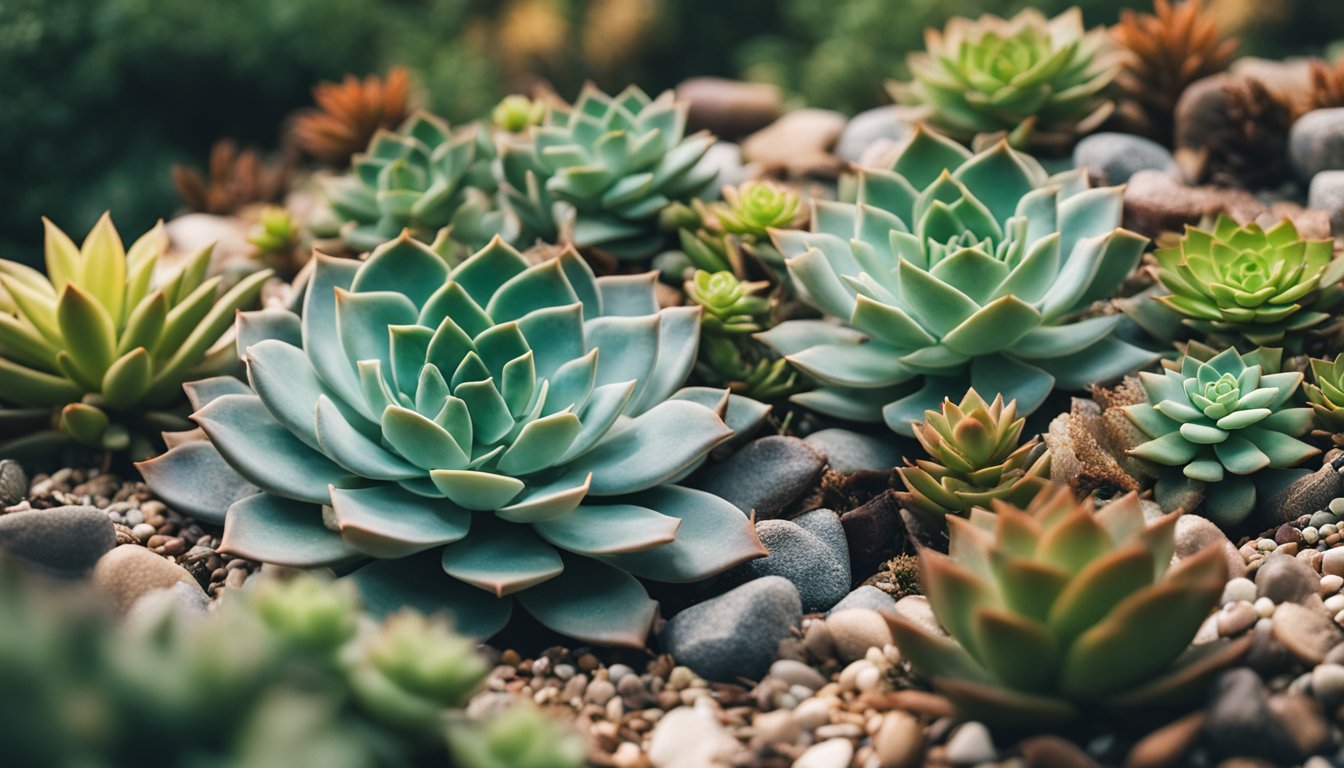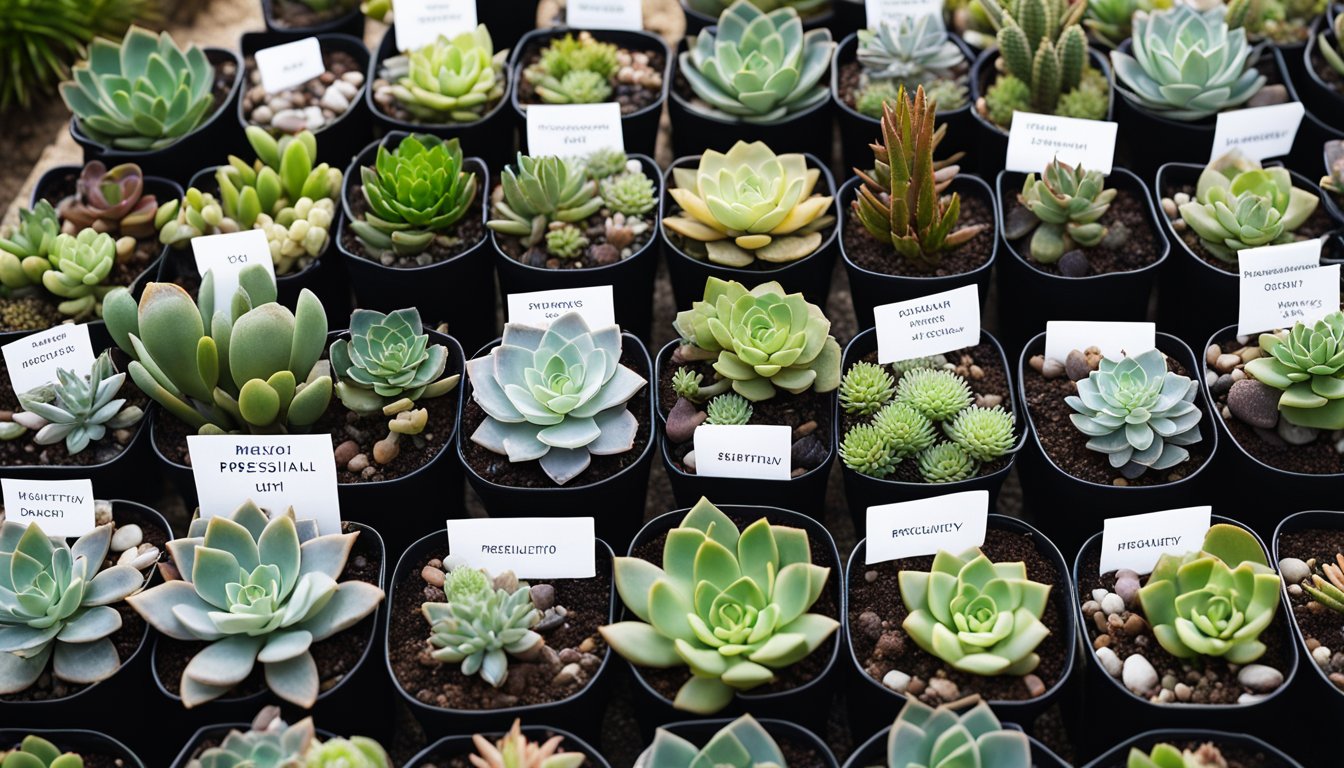Late updated: 27 Sep 2024 14:09
Written by: Emily Thornton
Best Native UK Succulents for Low-Water Gardens: Top Picks for Sustainable Planting
Succulents offer an appealing solution for gardeners looking to create low-water gardens in the UK. These plants are highly valued for their exceptional drought tolerance and minimal maintenance needs. By capitalising on their natural adaptations, such as water-storing leaves, we can achieve lush and thriving gardens even in drier conditions. Exploring the best native UK succulents allows us to that are both low-maintenance and ideal for adapting to our changing climate.

Selecting the right succulents is crucial; some varieties are particularly well-suited for British gardens. These plants not only conserve water but also bring unique textures and colours to our outdoor spaces. Furthermore, they can thrive in various settings, from rock gardens to stylish container arrangements. By effectively using these resources, we enhance the ecological resilience of our gardens.
Our journey into the world of native UK succulents will uncover practical strategies for cultivating a low-water garden. From understanding the plants that fare best in local climates to mastering the techniques for their care and maintenance, our insights aim to empower readers to make informed gardening choices.
Key Takeaways
- Native UK succulents are excellent for low-water gardens.
- Careful selection of plants enhances garden resilience.
- Succulents thrive with minimal maintenance in British climates.
Selecting the Right Native UK Succulents

In our quest to conserve water and create stunning gardens, native UK succulents provide a perfect solution. Let's explore varieties suitable for our climate and their defining traits, as well as how to differentiate between cacti and other succulents.
Understanding Succulent Varieties
Native UK succulents come in a variety of shapes and sizes. Sedums, also known as stonecrop, are popular for their durability and low maintenance. They thrive in rocky soils and are available in numerous species and hybrids.
Euphorbia offers unique forms and colours, often with stunning blooms that add visual interest. Crassula has appealing rosettes and is generally easy to grow. These options, among others, are excellent for both novice and experienced gardeners.
Traits of Drought-Resistant Succulents
Drought-resistant succulents excel at conserving water, making them ideal for UK gardens with low water needs. Many have thick, fleshy leaves that retain moisture, an adaptation crucial for survival.
Agave and Echeveria are prime examples, featuring robust structures that endure dry spells. The leaves of these plants are designed to maximise water retention, ensuring they remain vibrant while minimising water usage.
Some succulents, like Aloe vera, are renowned for their resilience and healing properties. Choosing plants with these traits can significantly reduce the need for frequent watering.
Cacti and Non-Cacti Differences
While often grouped together, cacti and other succulents differ in distinct ways. Cacti belong to the Cactaceae family and typically have spines, an adaptation for deterring herbivores and reducing water loss.
Non-cacti succulents, such as Echeveria and Crassula, lack these spines and often feature ornamental rosettes. These differences are vital when selecting plants for specific aesthetic preferences or garden conditions.
We must understand these distinctive traits to make informed choices about the succulents we introduce to our landscape. By recognising the unique needs and advantages of each type, we can create a thriving garden that aligns with our environmental and aesthetic goals.
Creating and Managing a Low-Water Garden

Establishing a garden that conserves water requires careful planning and management. By focusing on proper soil preparation, efficient watering techniques, and thoughtful landscape planning, we can create a sustainable space filled with native succulents and drought-resistant plants.
Soil Preparation and Types
For a low-water garden, selecting the right soil is crucial. We need free-draining soil to prevent root rot and overwatering. Loamy, sandy soil works well, as it allows excess water to escape while retaining enough moisture for plant health. If our native soil is heavy clay, amending it with sand or gravel can improve drainage.
Another option is to create raised beds filled with a tailored mix that supports succulents and drought-tolerant species. By incorporating organic matter such as compost, we encourage microbial activity that further enhances soil structure. Ventilation is also essential for root health. Aerating the soil by loosening it with a fork allows air to flow, promoting robust root systems.
Watering Techniques and Conservation
Efficient watering strategies are vital for maintaining a healthy low-water garden. Succulents like sedum and other drought-resistant plants require minimal watering once established. We should aim to water deeply but infrequently to encourage deep root growth. During peak heat, early morning or late evening watering reduces evaporation.
Utilising rainwater collection systems, such as water butts, allows us to capture and use natural rainfall for irrigation. Another method involves using soaker hoses or drip irrigation to deliver moisture directly to the root zone, minimising waste. Mulching around plants conserves soil moisture by reducing evaporation and keeping roots cool.
Landscape Planning for Drought Tolerance
Thoughtful landscape planning aligns our garden's physical layout with the inherent requirements of drought-tolerant plants. We can create gravel gardens with hardscape elements like stones and pavers to divide areas and guide water flow. Group plants with similar water needs together, allowing for more efficient irrigation management.
Incorporating drought-resistant species such as lavender, hardy geraniums, and artemisia can add diversity and colour without demanding excessive water. Ground cover plants, like Black-eyed Susan and bearded irises, not only reduce water consumption but also stabilise soil and suppress weeds. This careful selection and planning contribute to a landscape resilient against dry spells, ensuring our garden thrives even in challenging conditions.
Frequently Asked Questions

In UK low-water gardens, native succulents offer beauty and practicality. These plants thrive with limited watering, adapt to various light conditions, and enhance garden aesthetics throughout the year.
What are the top native succulents for creating a UK low-water garden?
Sedum is a favourite for UK gardens due to its resilience and low-water needs. Additionally, Sempervivum, with its variety of shapes and colours, is ideal for these settings. These succulents provide texture and interest without demanding frequent watering.
Can succulent plants thrive indoors in the UK with limited watering?
Yes, succulents like Aloe and Haworthia are well-suited for indoor environments. They store water in their leaves, allowing them to withstand infrequent watering. Proper light exposure and occasional watering are key for these plants to flourish indoors.
Which drought-resistant plants are suited for shaded, dry soil in Britain?
Ferns like Dryopteris filix-mas can handle shaded dry areas. They maintain lushness without excessive watering. Euphorbia amygdaloides is another option, bringing colour to shaded spots whilst requiring minimal care.
How do I choose succulents for container gardening outdoors that require minimal water?
Opt for compact varieties like Echeveria and Crassula. These succulents adapt well to containers, retaining moisture effectively. Ensure the pots have drainage holes to prevent waterlogging, essential for succulent health.
What evergreen plants can withstand dry conditions and are suitable for UK gardens?
Bergenia is a robust evergreen that handles dry conditions well. Additionally, Buxus sempervirens, or the common box, offers structure and year-round greenery in gardens that do not receive regular watering.
What varieties of succulents can grow in low-light conditions within the UK?
Zamioculcas zamiifolia (ZZ plant) and Sansevieria trifasciata (snake plant) are perfect for low-light areas. These succulents manage with minimal sunlight, making them ideal for parts of the garden or home that receive less direct light.
